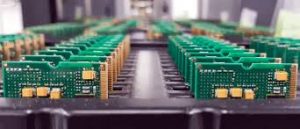Ensure Quality Control in PCB Assembly
As technology continues to advance, designers are pushing the limits of what can be accomplished on these thin sheets of conducting material. However, this also means that any quality issues in the PCB assembly process can have a major impact on the final product. This is why it’s crucial to ensure quality control in every step of the manufacturing process, from component selection to PCB layout. This will help to prevent common quality issues like a lack of proper heating during soldering, poor component placement, and improper board routing that can lead to electrical noise or failures in the finished product.
Printed circuit boards, or PCBs, are the foundation of electronic devices. They allow devices to function properly by connecting multiple components with one another and providing power. Printed circuit boards are used in a wide variety of applications, including consumer electronics, aerospace, medical devices, and telecommunications. However, a single error in the assembly process can cause serious damage or malfunction to the final device. As a result, it is essential to ensure high-quality standards in pcb assembly through rigorous testing and inspections.
The first step in the PCB assembly process is laying out the component locations on the board. This can be done manually or through a pick and place machine. Pick and place machines are increasingly becoming the standard for this type of assembly because they tend to be more accurate than humans. Humans are more likely to become fatigued and have eyestrain when working with small, delicate components for extended periods of time. This is why a good turnkey PCB assembly service will use a high-quality pick and place machine for this type of work instead of an employee.

How to Ensure Quality Control in PCB Assembly
After the PCB is affixed with all of its components, it must undergo a visual inspection. This involves looking at the board to check for excess solder, unconnected components, or other problems that may require rework. To reduce eye strain, inspectors can use hand-held optical tools like magnifying glasses or microscopes to achieve enlarged views of the board’s connections.
Another important part of the inspection process is running a Design for Manufacture (DFM) check. This is a type of analysis that looks at all the design specifications for the PCB and pinpoints any potential manufacturing problems. This allows PCB manufacturers to catch errors before production starts, which saves them money and keeps quality levels high.
Other important steps in the PCB assembly process include performing a Functional Test, Final Product Inspection, and Dub Plug-in Inspection. These tests and verifications make sure that the PCB meets all of the requirements for shipping and that it will function properly in its intended application. This is a vital step to protect intellectual property rights, ensure product dependability, minimize costs, comply with laws and regulations, and maintain a positive brand reputation. Companies that value their customers and the integrity of their products will develop a strong PCB quality assurance procedure, which leads to higher customer happiness and increased sales.